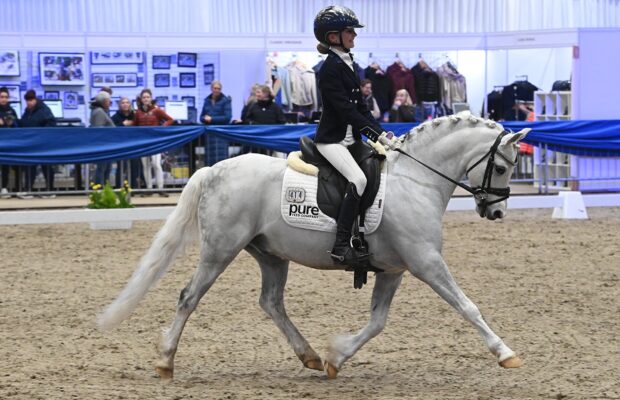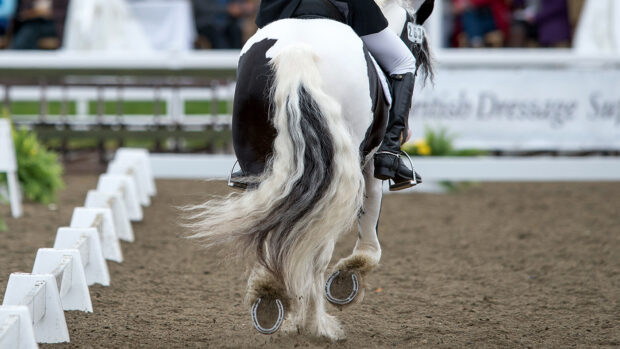All transitions require a certain level of skill, but it’s often the downward transitions that riders find most tricky. H&H asks Mandy Frost, a British Showjumping (BS) accredited UKCC Level 3 coach, for her top tips to improve the canter-to-trot transition
A rider can help their horse during transitions by using their aids, postural support and body control, but they need to understand that every transition takes preparation and a lot of practice.
Mandy explains that like an upward transition, a downward one should feel like it starts from the horse’s hindquarters.
“Before the rider asks for a downward transition they must push the horse forward so that the back end comes under the horse’s body and lightens the front end,” says Mandy.
1. Use your aids correctly
A horse must understand a rider’s aids for each transition and the rider must understand how to apply and coordinate those aids. “It’s really important to sit tall with increased weight in both seat bones,” says Mandy. “Stretch up tall so you have a gentle curve in the small of your back. The inside leg should close at the girth, while the outside leg closes just behind the girth to encourage the horse to bring its hindquarters under its body. As the horse picks up trot again both legs should resume a position at the girth.”
2. Preparation is key
Maintaining balance and preparation is a key factor to a good quality transition. “Without preparation, a downwards transition can cause you to fall forward and both of you will become unbalanced,” says Mandy. Most downward transitions result in less forward energy but a change in rhythm. “Use your core muscles to prepare your body for that decreased energy,” she adds. Brace your lower back by tightening your stomach muscles like you’re doing a sit-up. When you brace your back, your hips stop following the motion of the horse. This sends signals to him to drop down to the slower gait.
3. Half-halt
The aids for a canter-to-trot transition are to give a half-halt to prepare your horse that you’re about to ask it to do something. When riding a half-halt, Mandy says to sit tall in the body, close the lower legs on the girth and gently squeeze the horse into a restraining but allowing hand. “You should lighten your seat, and as your horse responds, allow him to go forward again. These aids should be only applied briefly so that your horse has nothing to resist against. If you’re worried about this transition it’s more than likely you’ll be tensing up, which again will send the wrong signals to the horse. Try to take a deep breath before the half-halt,” adds Mandy.
4. Adopt the correct position
“As you make your transition stay tall with your body and keep your back supple so that the horse’s hind legs can step underneath him,” says Mandy. “A common error is for riders to lean back and this causes the horse to fall on its forehand or make him hollow and go forward.”
5. Look up
“Look up when riding a transition. Looking down will only tip you forward and disturb the horse’s balance,” says Mandy.
6. Use a circle
Mandy suggests using a circle to improve your transition as it encourages the horse to bring his inside hind underneath him. “Using flexion through the body will encourage him to keep a softer outline.”
Like this? You might also enjoy reading these:
7 training tips that top showjumpers swear by
Learn how to ride perfect corners with this simple exercise
7. No stirrups
“A rider can try the canter-to-trot transition without their stirrups as it will make them stay sitting up,” says Mandy. “A rider does need to be very well balanced to do this, or they will just hang on to the mouth or lean too far back.”



